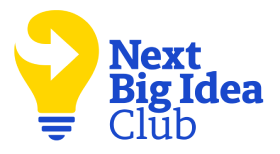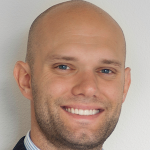Below, Jodi-Ann Burey shares five key insights from her new book, Authentic: The Myth of Bringing Your Full Self to Work.
Jodi-Ann is a writer and critic on race, culture, and health equity. Her essays appear in various arts, business, and literary publications. She created and hosts the prose and poetry salon Lit Lounge: The People’s Art, as well as the Black Cancer podcast.
What’s the big idea?
Authentic is more than a critique of the empty promise of being authentic at work. It is an invitation to question the structural realities of what it takes to be a person at work. To begin, we must take seriously the health and wellbeing of workers most impacted by harmful policies, performative practices, and opportunistic rhetoric about representation and inclusion.
1. Center the voices of those most impacted.
For years, I’ve heard the phrase, “bring your full, authentic self to work” to support diversity, equity, and inclusion initiatives. In public, I’ve heard workers of marginalized identities talk about their desire to be more authentic and the barriers preventing us from letting our “full self” flourish.
In private, however, I’ve witnessed friends and colleagues scoff at the idea of workplace authenticity, saying something along the lines of, “Yeah, right,” or “They don’t want that,” or “They don’t even know what that means.” I wrote this book to raise the volume of those conversations.
The reality is that the more of ourselves we give, the more institutions take from our careers, health, and well-being, and therefore the more we risk our livelihoods and lives. The stickiness of the “bring your full authentic self to work” narrative relies on the erasure and silence of those workers who are most harmed by fair-weathered inclusion policies and practices.
But we cannot understand how work works without talking to Black people and other people of color, people with disabilities, women, queer people, and especially those of us sitting at the intersections of marginalized identities. These are the identities companies cyclically like to say they value, while targeting us with discrimination, bullying, abuse, and inequities in pay and opportunity.
2. Collective access, not reasonable accommodation.
I have a spinal cord injury and must take care of my body in a way that minimizes neuropathic pain flares. Before the global COVID-19 pandemic, my employer made it very difficult for me to meet my access needs. Remote work policies were restricted to two designated days per week. The conference room policy allowed teams to book rooms anywhere on campus, which made my meeting-to-meeting commute chaotic. My co-workers questioned and judged why I took on-campus meetings remotely from my desk or carried a heating pad with me wherever I went, or why I fatigued so quickly walking from building to building.
When a colleague tested positive for COVID-19, just one email shut down our whole campus. Around the country and the world, work, school, and life moved online—for years. Remote work and other so-called “reasonable accommodations” previously denied to disabled workers because it was too expensive, too complicated, and bad for productivity and morale, soon became standard procedure.
“How companies pivoted during the COVID-19 pandemic revealed what had always been possible.”
Employers restructured jobs, made spatial modifications, and provided personal protective equipment. Relaxed policies allowed workers to reduce their schedules or flex their work hours. This restructuring did not reach everyone. The pandemic affected office workers and frontline service workers unevenly. People who could not work remotely bore the brunt of death and disease because employers and legislators failed to protect them. Still, the COVID-19 pandemic began an experiment of collective access at an unprecedented scale.
The support and structure we need as disabled workers are not “accommodations,” as we’ve learned to call them. Our access needs must be met to do our jobs. It is unnecessary (and prone to unchecked, unlawful discrimination) for companies to define and determine what is reasonable. Without a doubt, how companies pivoted during the COVID-19 pandemic revealed what had always been possible to ensure disabled workers can have their access needs met.
Unfortunately, all those learned lessons seem to have already been lost. Just a few years later, many employers have eliminated access practices, forced compliance through threats of termination, and enacted other punitive measures to constrain an empowered workforce. Ableism hurts us all.
3. No sector is immune to inequity.
It’s common to make for-profit companies the boogeymen of inequitable, hostile workplaces. I’ve spent most of my career working at mission-driven organizations. Early in my career, I worked as a teacher and administrator in charter schools. I spent five years in the global health and development sector. And I worked at a women-focused start-up. Each organization grounded its work in a progressive mission for equity, but that did not exempt these industries from the very same practices of discrimination, bullying, and abuse better known to characterize so-called Corporate America.
Institutions that contradict their own missions can corrupt the part of our authenticity fulfilled by mission-driven work. Instead of nurturing possibility, it breeds cynicism—not just toward one institution, but the entire sector.
Authenticity isn’t just who we are, but what we believe in: our mission and purpose in our careers. We must include practices and policies across sectors to better understand workplace inequities and their impacts on all workers.
4. Being more authentic cannot change company culture.
Every worker—any person—would want the space and safety to be themselves. We want to express ourselves without contorting who we are. This is especially true for workers subjected to historical and active identity-based discrimination.
Institutions often define authenticity by markers of difference. These accoutrements of identity can include hairstyles, clothing, pronouns, assistive objects, religious paraphernalia, or the words we speak. But inclusion takes more than just wheelchair ramps, pronoun pins, or inclusive dress codes.
“We want to express ourselves without contorting who we are.”
As workers, we exchange our talent and time for wages. There are much larger institutional levers impacting our professional lives than self-expression—wage theft, pay inequity, workplace fissuring, technological and managerial surveillance, occupational segregation, racism, sexism, and other forms of structural violence. Redefined as individual acts of self-expression, authenticity narratives abstract unjust and unlawful labor practices that perpetuate workplace discrimination.
5. Community is our greatest resource.
Employee resource groups (ERGs) are employee-led identity-based groups that provide formal channels for connection and collaboration. These groups are “sponsored” by employers, in that they are acknowledged, supported, and sometimes funded. ERGs are a lifeline for marginalized and underrepresented employees. No matter what our rank, department, office location, state, or region, we turn to ERGs for a place to belong. As corporate DEI programs evolve, more than 90 percent of Fortune 500 companies have active ERGs today.
I always found the “resource” part of employee resource groups a bit curious. Who are the resources for? As workers, whatever space we’ve carved out for ourselves belongs increasingly to the business. Institutions rely on ERGs to support their workforce at large, demonstrate their commitment to diversity, and comply with federal EEO mandates. ERGs help institutions attract and recruit more people of color, women, and other marginalized professionals. Our lived experiences serve critical parts of the business function: sensitivity readers, product innovation, and PR damage control.
Do ERGs have the capacity to agitate for the kind of protections we need, as workers, to be our full, authentic selves? Can ERGs provide safety for workers in the form of labor protections?
ERGs are projects of representation. By design, their power to ensure material labor protections is limited. ERGs appear union-like but cannot act in ways that are “dealing with” the organization. They cannot negotiate on the terms and conditions of employment. They cannot hold, act on, or represent collective worker grievances. They cannot engage in any collective bargaining with the employer. No organization-sponsored employee group can be structured to truly empower its workforce. To be more authentic, we need community, protection, and a definition of authenticity that goes beyond projects of representation.
Enjoy our full library of Book Bites—read by the authors!—in the Next Big Idea App:










